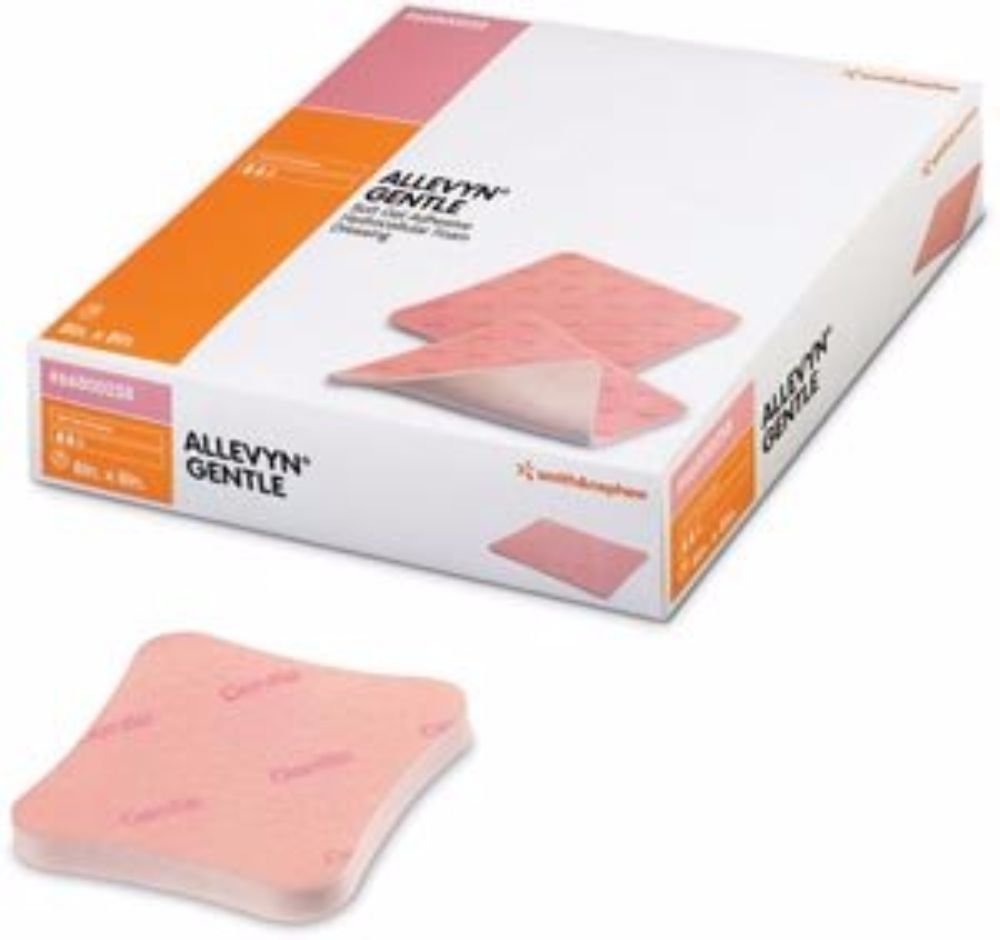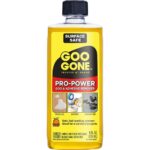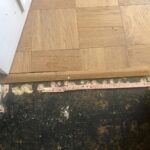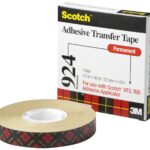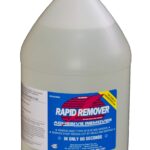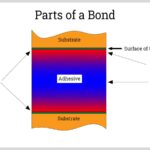Non-adhesive materials are those that do not have any adhesive properties. This means that they cannot be used to permanently bond two objects together. Non-adhesive materials are often used in situations where a more permanent option would be too risky or not suitable. Common examples of non-adhesive materials include PTFE, nylon, and other plastic materials. These materials can be used to create a barrier between two surfaces that prevents them from bonding together.
This is often done when two surfaces would be difficult or unsafe to bond together using an adhesive. Non-adhesive materials can also be used to temporarily join two objects together. This is done with products like Velcro, which uses its hook and loop design to fasten two objects together. However, this type of joining is not permanent and the objects can be easily separated. Non-adhesive materials are most commonly used in industries like construction and manufacturing. They can be used to protect surfaces from damage, create temporary connections, and allow objects to move or be adjusted without having to reapply an adhesive. Overall, non-adhesive materials are an important part of many industries and can provide a wide range of benefits ranging from protecting surfaces to allowing for temporary connections.
What is non adhesive dressing

Non adhesive dressing is a kind of medical dressing which has no adhesive properties. It is made of non-adherent, or non-stick, material and does not stick to the wound, allowing the wound to remain clean and free from irritation or infection. This type of dressing is often used for wounds that have already begun to heal, such as ulcers, abrasions, and burns. It is also used for shallow wounds, such as post-surgical wounds, to help protect the area without causing further damage. Non adhesive dressings are available in a variety of sizes and shapes, as well as different types of material, such as foam, soft cloth, and hydrocolloid. They are easy to apply, remove, and dispose of, making them a good choice for people who need to frequently change their dressing.
What is non-adhesive wound dressing?
Non adhesive wound dressings are medical products used to treat acute and chronic wounds. These dressings are used to protect the wound, to promote healing and to reduce the risk of infection. Non adhesive wound dressings are available in different forms such as foam, alginate, hydrocolloid, hydrogel and film. They are designed to be breathable and non-irritating, to allow the wound to heal without sticking to it. Non adhesive wound dressings help to keep the wound clean and reduce the risk of infection. They also help to absorb fluid and maintain a moist environment for the wound to heal quickly. Non adhesive wound dressings are not only used for healing, but also for pain management and protecting the wound from further damage.
What are non-adhesive bandages?
Non-adhesive bandages are an important type of medical supplies used for minor wound care and injury treatment. They are made of stretchable, breathable material that does not have an adhesive or sticky surface. Instead, the bandage is held in place with a secure wrap or tie. Non-adhesive bandages are typically used to secure gauze, protect a wound, or hold a cold or hot compress in place. This type of bandage is often used in cases where an adhesive bandage may cause skin irritation or allergies.
Non-adhesive bandages provide a secure fit and are more suitable for treatment of larger wounds. They are also easier to apply and remove than adhesive bandages, which makes them ideal for use on skin prone to allergies. Non-adhesive bandages come in several different sizes and shapes, so they can be tailored to fit the area of the body needing treatment. Additionally, most non-adhesive bandages are designed to be comfortable and breathable, allowing air to circulate and the wound to heal faster. Overall, non-adhesive bandages are an important medical supply for wound care and injury treatment, and they can be used on any part of the body. They are safe and effective, and they provide a secure fit while allowing the wound to heal completely.
How do you use non-adhesive dressing?
Non-adhesive dressings are used in many different medical scenarios. They are typically used to protect a wound from bacteria and germs, as well as to keep the wound moist and help in healing. Non-adhesive dressings are applied by first cleansing the wound and surrounding area with an antiseptic solution. The dressing is then placed directly on the wound, held in place with medical tape, adhesive strips, or bandages. To ensure that the dressing remains in place, it is important not to move the skin too much.
The dressing should be changed daily, or as recommended by your doctor, to ensure that the wound is kept clean and free of bacteria. In addition to wound care, non-adhesive dressings are often used to cover and protect skin that is at risk of pressure ulcers or blisters. This type of dressing absorbs moisture and helps protect and prevent skin breakdown. Overall, non-adhesive dressings can be an effective way to protect wounds and skin from infection or other complications. They are easy to use and can be used for a variety of medical purposes.
What is a non-adhesive foam dressing?
The lack of adhesive in these dressings makes them easier to remove and replace than adhesive dressings. Non-adhesive foam dressings are used to treat a variety of wounds, including minor abrasions, lacerations, ulcers and surgical incisions. They provide a moist environment that helps to promote natural healing by keeping the wound area clean and protected. In addition to their absorbent properties, non-adhesive foam dressings have a number of other benefits. They are breathable, allowing the wound to receive oxygen and prevent maceration.
They also help to manage pain and itching, and reduce the risk of infection by providing a barrier to bacteria and other contaminants. Non-adhesive foam dressings are easy to use and can be cut to fit the wound. They typically need to be changed every couple of days, depending on the amount of wound exudate present. They can be left in place for longer periods of time if the dressing is still intact and the wound is healing. Overall, non-adhesive foam dressings are a convenient and effective way to manage and protect a wound while it is healing. They are easy to use and help to create the right environment for wound healing without the need for adhesives.
What is a non-adherent dressing?
Non-adherent dressings are usually made of materials such as foam, gauze, non-woven fabric, or silicone. These materials have a low adherence, which means they do not stick to the wound. This allows for easy removal of the dressing without damaging the wound or causing pain. Non-adherent dressings are often used in combination with other forms of wound care, such as ointments, antibiotics, and pain medicines. This helps to speed up the healing process, reduce the risk of infection, and provide comfort to the patient.
Non-adhesive dressings are also valuable in protecting the wound from possible contamination. Since they are not adhesive, there is less risk of dirt and bacteria getting into the wound and causing an infection. Overall, non-adherent dressings are a useful tool for wound care and management, and are often used in combination with other forms of wound care. They provide comfort for the patient, reduce the risk of infection, and help to speed up the healing process.
What is non adhesive gauze?
What is non adhesive? Non adhesive refers to material that does not stick to surfaces when applied. In the medical field, non adhesive gauze is a type of gauze that is used to cover wounds and provide protection. It is made from a polyester or cotton fabric and does not contain any type of adhesive. The gauze is breathable and helps to prevent infection by allowing air to pass through, while keeping wound dressings secure and preventing bacteria from entering the wound. Non adhesive gauze is available in a variety of shapes and sizes, allowing for a customized fit for the user. It is also easy to remove and replace as needed. Non adhesive gauze is a must-have tool in any medical kit as it can help prevent infection and aid in healing.
What is the best non adherent wound dressing?
Non-adhesive wound dressings are a type of dressing specifically designed to be placed on a wound without the use of any adhesive. They are often referred to as transparent dressings or ‘island’ dressings due to the fact that they cover the wound but do not adhere to either the wound or the surrounding skin. The best non-adherent wound dressing would be one that is comfortable, easy to apply and remove, and provides the wound with the best possible protection. It should protect the wound from bacteria and other contaminants, while promoting healing, and should not interfere with the wound healing process. A good non-adherent dressing should also be permeable and highly breathable, allowing air and moisture to pass through it, while still providing a waterproof barrier and reducing the risk of infection.
It should also be flexible enough to move with the contours of the skin to provide the best possible coverage. The material used to make non-adherent dressings should also be soft and non-irritating and should not cause any damage to the wound or surrounding skin. It should also be able to conform to the shape of the wound and be easily cut to size if necessary. The best non-adherent wound dressing should be easy to use, comfortable, and provide the optimal protection for the wound. It should promote healing and protect the wound from bacterial and other contaminants, while allowing air and moisture to pass through. It should also be flexible enough to move with the contours of the skin and should be made from a non-irritating material to avoid any damage to the wound or surrounding skin.
What are allevyn non adhesive dressings used for?
Non adhesive dressings are an important tool when it comes to wound care. They are designed to provide protection and support to your skin while it is healing. Allevyn Non Adhesive dressings are designed with a breathable outer layer, which helps in keeping the wound dry and allows air to pass through it. This helps to reduce the risk of infection and also helps to reduce pain. The dressings are also highly absorbent, helping to draw away any excess fluid from the wound.
Allevyn Non Adhesive dressings are often used for wounds that are shallow, weeping, or infected. They are also used for bed sores and pressure sores, helping to protect them from further damage and reduce pain. The dressings can also be used to help protect wounds that are prone to irritation from friction. These dressings are designed to be easy to apply and remove, and are available in a range of sizes and shapes, allowing you to find the right size and shape to suit your wound. They are also designed to be comfortable to wear and are designed to be breathable, helping to reduce the risk of infection. Overall, Allevyn Non Adhesive dressings are an important tool when it comes to wound care, and can help to reduce pain, reduce the risk of infection, and support the healing process. They are a great choice for those who require a dressing that is easy to apply and remove, and comfortable to wear.
What is a non adhesive bandage

These bandages are made from a variety of materials including fabric and foam, and are designed to stay in place without using an adhesive. They are usually more comfortable than adhesive bandages, and are better suited for more delicate areas of the body. Non adhesive bandages can be applied to wounds or injuries in a variety of ways, depending on the type of bandage being used. Some non adhesive bandages are held in place with clips, while others are secured with Velcro-like fasteners. They can also be secured with tape or a soft tie.
Non adhesive bandages have several advantages over adhesive bandages, including being less likely to cause skin irritation or discomfort. They also don’t leave a sticky residue like adhesive bandages can, making them easier to remove. Some non adhesive bandages are also waterproof, making them ideal for use in wet or humid conditions. Non adhesive bandages are most commonly used to secure dressings and prevent the entry of dirt or bacteria into the wound. These bandages are also commonly used in medical procedures such as IVs, catheters, and wound irrigation. They can also be used to cover and protect wounds, abrasions, and other areas of the skin that need to be covered. Overall, non adhesive bandages are a convenient and comfortable way to secure a dressing or wound without the need for a sticky adhesive. They can be used in a variety of ways, and offer several advantages over adhesive bandages.
How do you use a non adhesive bandage?
What is a non-adhesive bandage? Non-adhesive bandages are specialized bandages that are designed to create an airtight seal without the use of any adhesives. This makes them ideal for use on sensitive skin and areas that may be prone to irritation. To use a non-adhesive bandage, start by cleaning the wound and surrounding area with a mild soap and water, then dry the area with a clean cloth or paper towel. Next, open the package and remove the non-adhesive bandage. Spread the bandage over the wound and secure it in place with your fingers.
Once the bandage is secure, you can use a piece of tape to keep it in place if necessary. It’s important to change non-adhesive bandages regularly, as they can become loose and can cause skin irritation. When changing your bandage, make sure to remove the old one carefully and clean the area with a mild soap and water. After it’s dry, apply a new non-adhesive bandage. Non-adhesive bandages are an excellent choice for those with sensitive skin or for areas that are prone to irritation. They provide an airtight seal that won’t irritate the skin, and they can be easily removed and replaced as needed.
What is the difference between bandage and adhesive bandage?
It can also be used to hold a dressing in place. Bandages are usually secured with pins, clips, or tape. An adhesive bandage is a bandage that is designed to adhere directly to the skin. It typically contains a pad that is coated with an adhesive material on one side. The adhesive side is then applied to the wound, providing a protective barrier and keeping the dressing from slipping off.
Non-adhesive bandages are bandages that do not have any adhesive material on them. They are usually secured with pins, clips, or tape. Non-adhesive bandages are used when the wound is not deep enough to require an adhesive bandage. In general, adhesive bandages are more secure and provide better protection than non-adhesive bandages. They are also easier to apply and can be used on wounds of any size. Non-adhesive bandages, on the other hand, are not as secure and are best used for shallow wounds that do not require a snug fit. Both bandages can be used to help keep a wound clean and protect it from further injury. However, adhesive bandages are usually the better choice for more serious injuries.
What is the difference between adhesive and non adhesive dressing?
Non adhesive dressings are medical dressings used in wound care that do not use an adhesive backing to adhere to the skin. Instead, they are held in place with other means, such as wound closure strips, bandages, and tape. Non adhesive dressings are often made of soft materials such as gauze or foam and are generally easier to apply than adhesive dressings. Adhesive dressings, on the other hand, are made of a material that is pre-coated with an adhesive. They are designed to stick to the skin and remain in place for days without the need for bandages or tape.
Adhesive dressings come in a variety of shapes and sizes, making them ideal for covering large and small wounds. The main difference between adhesive and non adhesive dressings is that the adhesive dressings are designed to stay in place for a longer period of time without the need for additional bandages or tape, whereas non adhesive dressings need additional bandages or tape to hold them in place. Additionally, adhesive dressings tend to be more comfortable to wear and provide better protection from bacteria, water and dirt. Overall, both adhesive and non adhesive dressings can be very useful in wound care, depending on the type of wound and the patient’s individual needs. It is important to talk to a healthcare professional before choosing which dressing is best for a particular wound.
What is a non adhesive?
Non adhesives are useful for a variety of applications, such as protecting surfaces from damage or filling gaps between surfaces. Non adhesive materials may be either naturally occurring, such as waxes and oils, or artificially manufactured, such as plastics and rubbers. Generally, non adhesive materials are used to protect surfaces from wear and tear, and prevent materials from sticking to each other. In industrial applications, non adhesive materials are often used to provide a barrier between two surfaces that would otherwise be incompatible or to seal off gaps between two parts. Non adhesive materials are also often used when painting or staining surfaces, as they provide a protective coating that makes it easier to remove the paint or stain.
Non adhesive materials can also be used to dampen sound, protect electrical components from shorting out, and provide shock absorption. In many cases, non adhesive materials are chosen because they are cheaper and easier to apply than adhesive materials. Additionally, some non adhesive materials are able to resist extreme temperatures, water, and other harsh conditions. Non adhesives can be used in a variety of applications, from protecting the hull of a boat to providing insulation in an electrical device. Overall, non adhesive materials are an important and versatile type of material that can be used in many different applications. From providing protection to improving the appearance of a surface, non adhesive materials can have many uses.
What is a non adhesive dressing called?
Non adhesive dressings are medical supplies used to cover wounds, sores, and abrasions. They are designed to provide a barrier between the wound and the outside environment, protecting it from infection and other potential contaminants. Non adhesive dressings are usually made of thin, breathable materials such as gauze, foam, or plastic, and are held in place with a bandage or other fastening device. They are often preferred over adhesive dressings, which can cause irritation or pain when removed. Non adhesive dressings are an essential part of wound care, and can help to promote healing while protecting the wound from further damage. They are also easy to use and apply, making them a popular choice among healthcare professionals.
Is adhesive and glue the same thing?
Adhesive and glue are not necessarily the same thing. Adhesives are materials that bond two surfaces together, while glue typically refers to a specific type of adhesive. Glue is generally made up of a resin, a hardener and sometimes a filler. Non adhesive materials are not capable of bonding two surfaces together and are not affected by glue. Examples of non adhesive materials include paper, plastic, rubber, and some fabrics.
Non adhesive materials provide a barrier that prevents the adhesion of other materials and are used in many different applications. Non adhesive materials are often used in the packaging and shipping industries to protect items from moisture and dust. They are also used in medical and industrial applications to create a barrier between objects that need to be separated.
What are the different types of adhesive bandages?
Non adhesive bandages are those that do not have an adhesive coating on the backing material. These bandages typically use other fastening methods, such as a plastic clip, to hold the bandage in place. Adhesive bandages are those that use an adhesive coating to stick to the skin. The adhesive coating is usually made of either latex or acrylic. These bandages come in a variety of sizes and shapes, and are often used for minor cuts and scrapes.
Fabric bandages are made of a flexible fabric material that is designed to stay in place without adhesive. These bandages are often used for larger injuries or wounds, as they provide more coverage. Elastic bandages are made of a flexible material that is designed to provide compression and stay in place. They are often used for sprains and muscle injuries, as the elastic material helps to reduce swelling and provide support. Gauze bandages are used to cover open wounds and provide protection from infection. They are made of cotton and are breathable, allowing air to reach the wound. They can also be used to apply ointments or medications to the wound.
What are some different types of bandages?
Non adhesive bandages are a bandage that does not have an adhesive material in its composition. These bandages are usually made with a woven fabric and are used primarily to protect and heal wounds and abrasions. They come in a variety of shapes and sizes, depending on their purpose. Foam bandages are the most common type of non adhesive bandages. They are lightweight, breathable and conform to the body like a second skin.
Foam bandages provide good cushioning and protection for wounds, providing an effective barrier against infection. Gauze bandages are also non adhesive. They are usually made of a light, breathable fabric and can be used to absorb wound drainage and provide padding to protect and cushion the wound. Gauze bandages are very versatile and can be used in many ways, such as wrapping a cast or splint. Elastic bandages are another type of non adhesive bandage. They are made of an elastic material that stretches, allowing it to be wrapped around the body to provide support and help reduce swelling. Elastic bandages can also help keep dressings in place or be used to immobilize a joint or limb. Non woven bandages are another type of non adhesive bandage. These bandages are made from a non woven, synthetic material that is breathable and provides a barrier against infection, while still allowing the wound to heal. Non woven bandages are often used to cover large areas of the body, such as the chest or back, providing protection against further injury.
